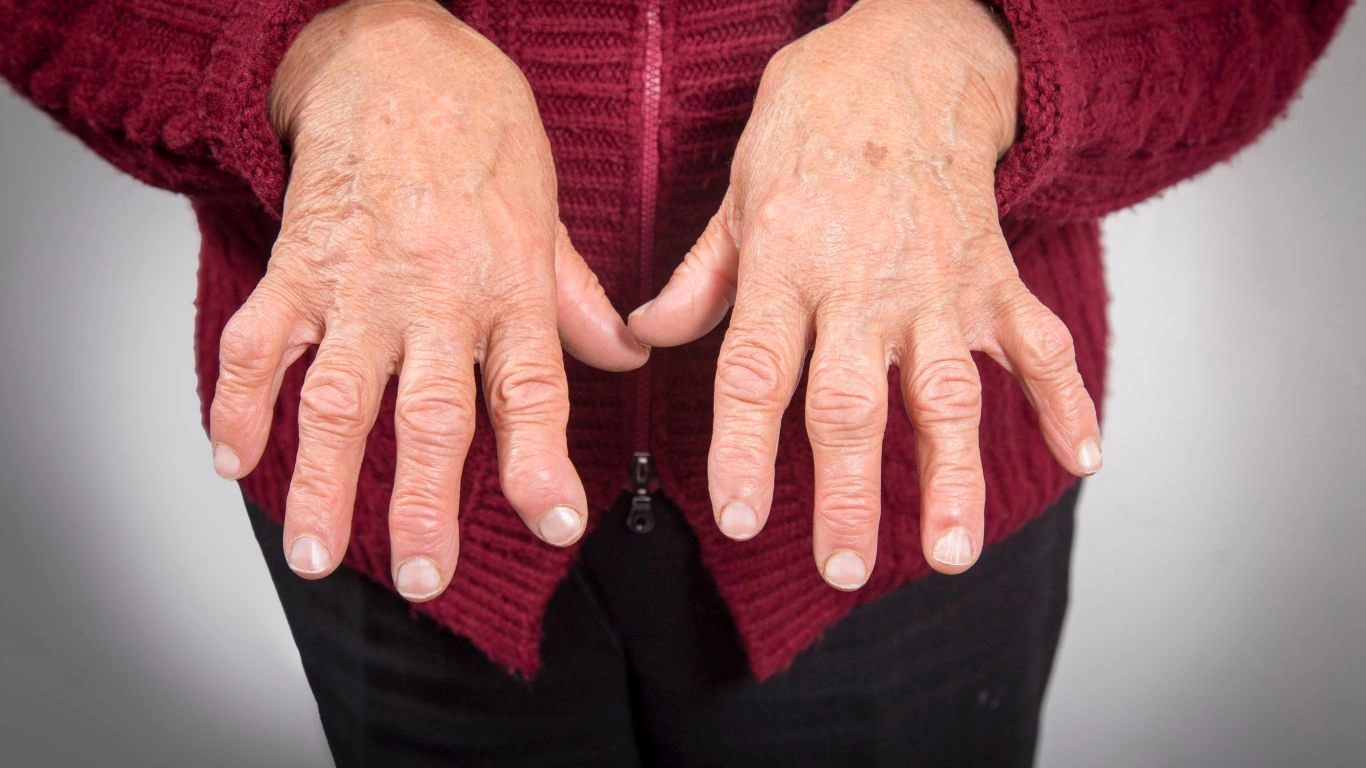Does Rheumatoid Arthritis Get Worse with Age? Powerful Insights You Need!
Rheumatoid arthritis (RA) is a chronic inflammatory disorder that often affects the joints, leading to pain, swelling, and stiffness. It’s a condition that I, as a Rheumatology Nurse Practitioner, encounter regularly in my practice, and one of the most common questions patients ask is, “Does rheumatoid arthritis get worse with age?” While this question doesn’t have a simple answer, understanding the factors at play can help clarify why some people experience a progression of symptoms over time, while others seem to manage well with treatment. Let’s dive into the complexities of how RA can change over the years and what you can do to manage it.
What Happens as Rheumatoid Arthritis Progresses Over Time?

Rheumatoid arthritis is an autoimmune disease, meaning your immune system mistakenly attacks your body’s tissues—in this case, the lining of your joints. Over time, this can lead to progressive damage. But, just because you’ve been diagnosed doesn’t automatically mean that RA will significantly worsen as you get older. The progression of the disease varies from person to person, influenced by factors like age, lifestyle, and how well the condition is managed. That’s the first important thing to keep in mind: each individual’s journey with RA is unique.
What Factors Contribute to RA Getting Worse with Age?
Several factors can influence the trajectory of rheumatoid arthritis over time. I’ve seen how these can play out in my patients’ lives, and understanding them can empower you to take control of your health. Let’s break them down:
- Chronic Inflammation: One of the hallmarks of RA is persistent inflammation. As the disease progresses, the inflammation can begin to affect not just the joints, but other organs, such as the lungs or heart. This long-term inflammation can lead to joint deformities, which is often what people associate with RA worsening over time.
- Joint Damage: Over the years, repeated inflammation can cause joint destruction, leading to deformities and disability. However, with the right treatment, this doesn’t have to be inevitable. Early intervention is key!
- Age-Related Factors: As we age, the body’s ability to repair itself slows down. This means that for older individuals with RA, the repair of joint damage or the control of inflammation might take longer. The older we get, the harder it can be to manage the disease.
- Comorbidities: RA patients often have other health conditions, such as heart disease or osteoporosis, which can complicate treatment and make symptoms feel more severe. This is something I’ve seen many times in my practice, where one disease often impacts how the other is managed.
- Inadequate Treatment: Inconsistent or delayed treatment can lead to a worsening of RA symptoms. It’s crucial to work with your healthcare team to find a treatment plan that fits your needs.
Does Rheumatoid Arthritis Get Worse with Age for Everyone?

Not necessarily. There’s no one-size-fits-all answer. I’ve had patients in their 70s who are still leading active lives with minimal symptoms, thanks to early diagnosis and aggressive treatment. On the flip side, I’ve had younger patients whose RA has progressed rapidly due to delayed diagnosis or poor management. The key to preventing the disease from getting worse is early and consistent treatment.
Interestingly, many people experience periods of flare-ups followed by periods of remission. Some patients may find that their symptoms stabilize after a certain age. In my experience, this can be linked to a variety of factors like changes in immune function or lifestyle adjustments. While RA is unpredictable, the notion that it always gets worse with age isn’t true for everyone.
Personal Story: Managing RA Over the Years
Over the years, I’ve worked with many individuals who’ve been diagnosed with RA at various stages of life. One patient who stands out in my mind was a woman in her early 50s when she was diagnosed. She had been struggling with pain and swelling in her hands and knees for years, but it was only after a series of misdiagnoses that she finally got the correct one. At first, she was devastated by the news, but with a combination of DMARDs (disease-modifying antirheumatic drugs), biologics, and lifestyle changes, she managed to keep her symptoms under control.
Today, years later, she’s still active—she loves hiking and gardening. Her journey isn’t without its challenges, but she’s learned that with the right treatment and regular follow-ups with her healthcare team, she can maintain her quality of life. This is an example of how RA doesn’t necessarily worsen with age, especially when managed effectively.
What Can You Do to Prevent RA from Worsening Over Time?

Managing rheumatoid arthritis effectively is all about staying ahead of the disease. Here are a few things you can do to help prevent worsening symptoms:
- Adhere to Your Treatment Plan: Consistency is key. Whether it’s medication, physical therapy, or lifestyle changes, sticking to your plan is vital for long-term success. Don’t skip your meds, and don’t hesitate to talk to your doctor if something isn’t working.
- Stay Active: Regular exercise can help reduce inflammation, improve joint function, and maintain overall health. It’s important to find activities that work for you—whether it’s swimming, walking, or gentle yoga. Your joints will thank you!
- Eat a Healthy Diet: A balanced diet rich in anti-inflammatory foods can help manage symptoms. Think leafy greens, berries, fatty fish like salmon, and healthy fats like olive oil. Limiting processed foods and sugar can also make a difference.
- Manage Stress: Stress can trigger RA flare-ups, so finding ways to relax—through meditation, mindfulness, or just taking time for yourself—is crucial for managing the disease.
What Are the Different Stages of Rheumatoid Arthritis?

Rheumatoid arthritis progresses in stages, and understanding these stages can give you a better idea of how the disease might change over time. It also helps in anticipating treatment needs and making decisions to prevent further joint damage. The stages of RA typically include:
- Stage 1 – Early Stage: This is when the disease first begins to affect the joints, often causing mild symptoms like joint pain and stiffness. However, there might not be any noticeable damage to the joints yet. The immune system has just started attacking the synovium (the lining of the joints).
- Stage 2 – Moderate Stage: In this stage, the disease has begun to cause noticeable inflammation and can affect multiple joints. Swelling, redness, and heat can be felt around the joints. At this point, some damage to the cartilage might begin, but the bones remain largely unaffected.
- Stage 3 – Severe Stage: The inflammation in the joints has caused significant damage by now. You might experience severe pain, stiffness, and difficulty moving the affected joints. The cartilage and bone are both affected, leading to deformities and loss of function. It’s also common for the tendons and ligaments to weaken.
- Stage 4 – End-Stage: This is the final stage where joint deformities are widespread, and the joint may become completely stiff or immobile. The pain might be less intense, but the damage to the joints is often permanent. People in this stage may experience a significant decrease in mobility and quality of life.
How Do You Know If RA Is Getting Worse Over Time?

If you’re living with RA, it’s natural to be concerned about the possibility of the disease worsening over time. In my experience as a Rheumatology Nurse Practitioner, the key to managing RA is closely monitoring your symptoms and working closely with your healthcare team. Here are some signs that RA could be progressing:
Increased Pain and Swelling in Joints
If you notice that your joints are becoming more painful and swollen over time, it could indicate that the inflammation is intensifying. Swelling is one of the most common signs that the disease is progressing, and it may lead to further joint damage if not addressed promptly. If you’re dealing with pain that doesn’t seem to improve with over-the-counter medication or changes in activity, it’s important to reach out to your doctor for an updated treatment plan.
Loss of Range of Motion
As RA progresses, it may become harder to move your joints as freely as you once could. For example, bending your knee or turning your wrist might become more difficult due to the stiffness and pain in the joints. This loss of mobility is often a sign that the joint damage is becoming more severe. The earlier you identify this, the better chance you have of slowing the progression.
Joint Deformities
Joint deformities are more common in the later stages of RA, but they can start to appear earlier if the inflammation is left unchecked. I’ve seen patients with misaligned fingers or wrists, and in some cases, even more severe deformities that make daily tasks difficult. These deformities are a result of prolonged inflammation and damage to the bones, ligaments, and tendons. But don’t worry—while these changes are concerning, they are preventable with proper treatment.
Frequent Flare-Ups
Flare-ups are periods where RA symptoms worsen, and they can happen at any stage of the disease. However, if you notice flare-ups are becoming more frequent or lasting longer, it may be a sign that the disease is progressing. Managing flare-ups early can help prevent long-term damage, so it’s crucial to address any changes in symptoms with your healthcare provider.
Fatigue and General Malaise
Fatigue is often an overlooked symptom of rheumatoid arthritis. It’s more than just being tired after a long day—people with RA often feel wiped out, even after a full night’s sleep. Chronic fatigue can become more pronounced as RA progresses, especially if there’s ongoing inflammation in the body. I’ve had patients who reported feeling drained and unwell, which can have a significant impact on their quality of life. This symptom should never be ignored as it may indicate the disease is becoming more active.
How Can You Monitor RA to Catch Worsening Symptoms Early?

The best way to catch worsening symptoms early is by maintaining regular communication with your healthcare team and keeping track of your symptoms. Here are a few tips for monitoring your RA and ensuring that any changes are addressed quickly:
- Keep a Symptom Diary: Write down any changes in your symptoms, including pain, swelling, stiffness, and fatigue. This can help you spot patterns and provide useful information to your doctor during appointments.
- Track Your Physical Function: Keep track of how easily you’re able to perform daily activities. If you notice that it’s becoming harder to do things like climbing stairs, getting dressed, or typing, make a note of it. This can help you assess whether your range of motion is being affected.
- Attend Regular Checkups: Regular visits to your rheumatologist are essential. Blood tests and imaging studies (like X-rays or ultrasounds) can detect early signs of joint damage or inflammation that you may not feel yet.
- Follow Your Treatment Plan: Make sure to stick to the medication plan prescribed by your doctor, even if you’re feeling well. Disease-modifying antirheumatic drugs (DMARDs) and biologics can help slow down disease progression. Don’t skip doses or stop medications without consulting your doctor.
Being proactive about your treatment and symptom management is essential in preventing long-term damage. By staying vigilant and working closely with your healthcare provider, you can significantly reduce the chances of RA worsening with age. Remember, you’re not alone in this journey—there are tools and treatments available that can help you live a full, active life.
What Are the Latest Treatments for Rheumatoid Arthritis?

As RA treatment evolves, new therapies are constantly being introduced to help prevent the progression of the disease and reduce symptoms. With advancements in medicine, we now have more options than ever before to manage RA, especially as we consider how the disease might worsen with age. In my practice, I’ve seen firsthand how the right treatment plan can make all the difference in slowing down the disease and improving a patient’s quality of life. Let’s take a closer look at some of the most promising treatments available for RA today:
Traditional Disease-Modifying Antirheumatic Drugs (DMARDs)
DMARDs have long been the cornerstone of RA treatment. These medications work by targeting the underlying immune system dysfunction that causes inflammation in the joints. The goal is to slow the progression of the disease and prevent joint damage. Methotrexate is the most commonly prescribed DMARD and remains effective for many patients. However, newer and more advanced DMARDs, including biologics, are also changing the way we treat RA.
Biologic Drugs: A Game Changer
Biologics are a class of medications that are derived from living organisms and are designed to target specific parts of the immune system that cause inflammation. Drugs like Humira, Enbrel, and Remicade have revolutionized the way we manage RA, especially for patients whose disease hasn’t responded well to traditional DMARDs. Biologics can reduce inflammation more effectively and prevent damage to joints, which is key in preventing RA from worsening over time. However, these medications require regular injections or infusions, and some patients may experience side effects or need additional monitoring for infections.
As someone who’s worked with patients on biologics, I’ve seen positive results in those who previously struggled with their RA symptoms. But these medications aren’t a cure-all—they work best when used early and in conjunction with other treatments, like physical therapy or lifestyle changes.
Janus Kinase Inhibitors (JAK Inhibitors)
JAK inhibitors are a newer class of oral medications that block specific enzymes involved in the inflammatory process. Drugs like Xeljanz and Olumiant have shown promise in treating RA by reducing inflammation and preventing joint damage. These medications are especially helpful for people who can’t tolerate biologics or for those who prefer an oral medication over injections. Like all medications, they come with potential side effects, but they offer another effective option for managing RA.
Living with Rheumatoid Arthritis: Tips for Managing Your Health

In my years of working with RA patients, I’ve learned that managing the disease isn’t just about taking medications. It’s also about making lifestyle adjustments that can complement your treatment and help you stay as healthy as possible. Here are a few key tips I always share with my patients to improve their day-to-day lives while living with RA:
Stay Active, but Listen to Your Body
Regular exercise is crucial for maintaining joint flexibility and reducing stiffness. It may seem counterintuitive when you’re in pain, but staying active can help decrease inflammation in the long run. Low-impact activities like swimming, walking, and cycling are gentle on the joints while still keeping them moving. However, it’s important to listen to your body. If you’re experiencing a flare-up, rest is necessary—but keep moving when you can to prevent joint stiffness from becoming a bigger issue. I’ve seen patients who’ve gone from being completely sedentary to enjoying regular walks and feeling much better over time.
Balance Rest and Activity
Finding a balance between rest and activity is essential. Overexertion can lead to fatigue and worsen joint pain, while too much rest can cause your joints to stiffen up. I often encourage my patients to incorporate rest breaks throughout the day and to prioritize sleep, which helps in managing fatigue and inflammation. Having a structured routine that includes both periods of activity and rest can help you maintain a better overall quality of life.
Maintain a Healthy Diet
Food plays a major role in managing inflammation. A diet rich in anti-inflammatory foods can make a noticeable difference in how your body responds to RA. Omega-3 fatty acids found in fish like salmon, as well as nuts and seeds, can help lower inflammation. Fruits and vegetables, especially those with high antioxidant content (like berries, spinach, and kale), also help combat oxidative stress and support your immune system. I recommend focusing on whole foods and cutting back on processed foods, sugar, and fried foods, which can trigger inflammation.
Mindfulness and Stress Management
Stress can have a significant impact on your RA symptoms. It can cause flare-ups, increase pain, and lead to exhaustion. Finding ways to manage stress is just as important as any other part of your treatment plan. Techniques like deep breathing exercises, meditation, yoga, or even simple hobbies you enjoy can help you keep your stress levels in check. I’ve seen a lot of patients benefit from adding mindfulness practices to their daily routine, which can help improve both physical and mental health.
References
For more information on rheumatoid arthritis and its treatments, check out these reputable resources:
- Health.com – Rheumatoid Arthritis Overview
- National Institutes of Health (NIH) – Rheumatoid Arthritis
- American College of Rheumatology – Rheumatoid Arthritis
Disclaimer
The information provided in this article is for educational purposes only and is not intended as a substitute for professional medical advice, diagnosis, or treatment. Always seek the advice of your physician or other qualified health provider with any questions you may have regarding a medical condition. Never disregard professional medical advice or delay seeking it because of something you have read in this article.
Rheumatoid arthritis is a complex and unpredictable condition, and while it may worsen with age for some, effective management is possible with the right care and treatment plan. With the help of your healthcare team and consistent self-care practices, you can slow the progression of RA and maintain a fulfilling life.

Tarra Nugroho is a dedicated Nurse Practitioner with a strong foundation in family and preventive care. She brings both compassion and clinical expertise to her practice, focusing on patient-centered care and health education. As a contributor to Healthusias.com, Tarra translates medical knowledge into clear, empowering articles on topics like women’s health, chronic disease management, and lifestyle medicine. Her mission is simple: help people feel seen, heard, and informed—both in the clinic and through the content she creates. When she’s not caring for patients, Tarra enjoys weekend hikes, plant-based cooking, and curling up with a good health podcast.






